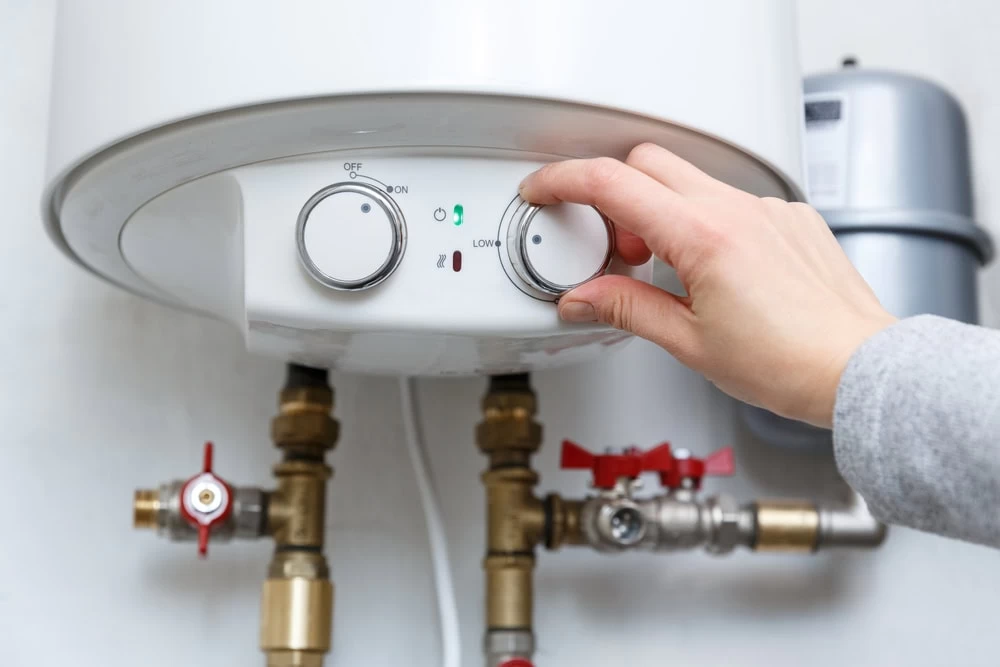Choosing between tankless and tank water heaters? Get the facts on costs, efficiency, and installation requirements for Northern California homes.
Share:

Summary:
Tankless water heaters heat water on demand as it flows through the unit. No storage tank, no standby energy loss, no waiting for a tank to refill after your teenager’s 20-minute shower.
The installation process is more complex than swapping out an old tank, though. You’re looking at potential electrical upgrades, gas line modifications, or venting changes depending on your current setup. Most installations in El Dorado County, CA take 4-6 hours when done by experienced professionals.

The numbers tell the real story. Tankless units typically run $2,500 to $3,500 including installation, compared to $900 to $1,500 for traditional tank systems.
But here’s where it gets interesting for California homeowners. You can claim rebates of $80 to $1,500 through SoCalGas and other utility programs, plus federal tax credits up to $600 for qualifying high-efficiency units. These incentives can cut your actual cost significantly.
Installation complexity drives much of the price difference. Gas tankless units might need larger gas lines, new venting systems, or electrical work for the control systems. Electric models can require service upgrades to handle 120-160 amps of power draw. Your existing plumbing configuration, local building codes, and accessibility all factor into the final cost. If you are need of a plumbing contractor El Dorado County, we are always one call away!
The payback period typically ranges from 6-10 years when you factor in energy savings. In Sacramento County, CA and surrounding areas, where energy costs continue rising, many homeowners see the math work in their favor sooner than expected.
Tankless systems deliver measurable efficiency gains. The Department of Energy confirms they’re 24-34% more efficient for homes using 41 gallons or less daily, and 8-14% more efficient even for high-usage households.
Your annual savings typically hit $375 compared to traditional tank systems. Over a 20-year lifespan, that’s $7,500 in energy cost reductions—often enough to offset the higher installation costs entirely.
The efficiency comes from eliminating standby heat loss. Traditional tanks constantly reheat stored water even when you’re not home. Tankless units only fire up when you turn on a hot water tap. In Northern California’s climate, where heating demands vary seasonally, this on-demand approach makes particular sense.
Location matters for efficiency calculations. Placer County, CA homes with colder groundwater temperatures might see slightly longer heat-up times, but the overall efficiency advantages remain strong. Your specific usage patterns, local water temperature, and utility rates all influence your actual savings.
Want live answers?
Connect with a CG Plumbing expert for fast, friendly support.
Traditional tank water heaters store 40-80 gallons of heated water in an insulated tank. They’re the familiar option—straightforward, reliable, and less expensive upfront.
Installation is typically simpler, especially if you’re replacing an existing tank with similar specifications. Most jobs take 2-3 hours and don’t require major electrical or gas line modifications. The trade-off comes in operating costs and space requirements.

Tank water heaters cost $600 to $2,400 for the unit, plus $150 to $800 for installation. The lower upfront investment appeals to budget-conscious homeowners, but the long-term picture shifts when you consider operating costs and replacement frequency.
Traditional tanks last 8-12 years on average, compared to 15-20+ years for tankless systems. You’ll likely replace a tank system once or twice during the lifespan of a single tankless unit. Factor in the replacement costs, and the financial gap narrows considerably.
Performance-wise, tank systems deliver consistent hot water flow rates until the stored water depletes. A 50-gallon tank provides steady hot water for multiple simultaneous uses—showers, dishwasher, washing machine—until the tank empties. Recovery time varies by fuel type and BTU rating, typically 20-60 minutes for a full reheat cycle.
In Amador County, CA homes with high simultaneous usage, tank systems can make practical sense. Large families running multiple appliances simultaneously might find tanks more convenient than managing flow rate limitations with tankless systems.
Tank water heaters need dedicated floor space—typically 16 square feet for a standard 50-gallon unit. They also require clearance for maintenance access and safety considerations. Basements, garages, or utility rooms work well, but not every home has ideal placement options.
Maintenance involves annual flushing to remove sediment buildup, anode rod replacement every 3-5 years, and occasional thermostat or heating element service. Sacramento area’s hard water accelerates sediment accumulation, making regular maintenance more critical for optimal performance and longevity.
Tank systems are vulnerable to catastrophic failure. When tanks develop leaks—and they eventually do—you’re looking at potential water damage plus emergency replacement costs. The 24/7 energy consumption also means higher utility bills year-round, even when you’re away from home for extended periods.
Tankless units mount on walls, fit in tight spaces, and eliminate flood risk from tank failures. They require annual descaling in hard water areas but don’t need the extensive maintenance schedule of tank systems. The compact footprint frees up valuable floor space for other uses.
The decision comes down to your priorities, usage patterns, and long-term plans. Tankless systems make sense if you value energy efficiency, space savings, and unlimited hot water capacity. Tank systems work better if you need lower upfront costs, simpler installation, or high simultaneous flow rates.
Consider your home’s specific situation. Older homes might need significant upgrades for tankless installation, while newer construction often accommodates either option easily. Your family size, usage patterns, and available space all influence which system serves you better.
Don’t navigate this decision alone. We’ve helped countless Northern California homeowners evaluate their options and install the right water heating solution for their specific needs.
Article details:
Share: